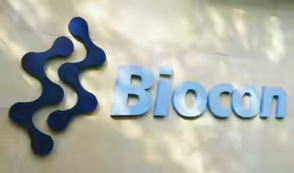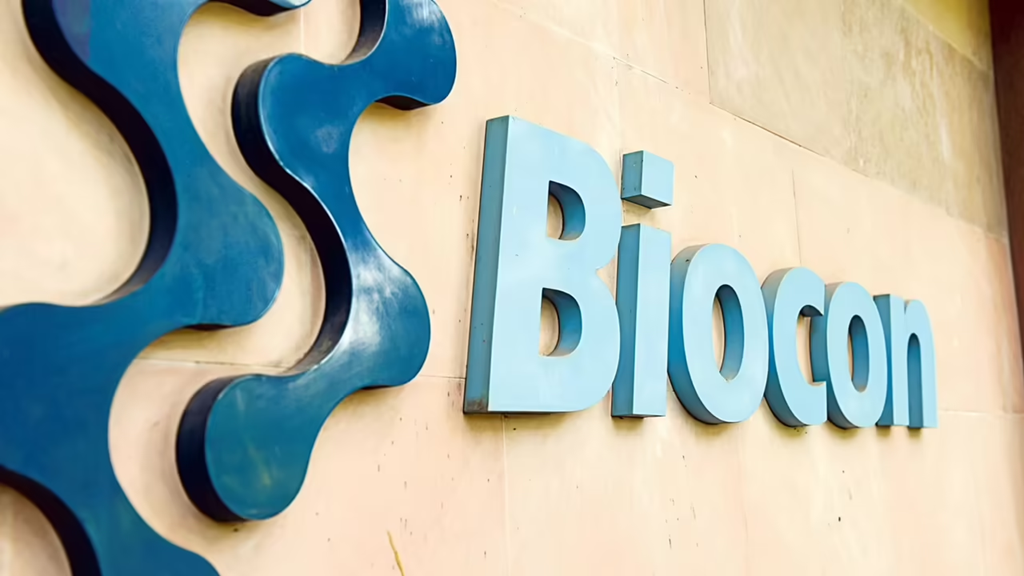预约演示
更新于:2025-08-29
Recombinant human insulin(Biocon Ltd.)
更新于:2025-08-29
概要
基本信息
原研机构 |
在研机构 |
非在研机构- |
最高研发阶段批准上市 |
首次获批日期 印度 (2004-11-10), |
最高研发阶段(中国)- |
特殊审评- |
登录后查看时间轴
关联
4
项与 Recombinant human insulin(Biocon Ltd.) 相关的临床试验NCT05413863
A Randomised, Double-blind, Three-period, Partially Replicated Crossover, Euglycaemic Glucose Clamp Study in Healthy Volunteers to Demonstrate Pharmacokinetic and Pharmacodynamic Similarity of Biocon's Human Insulin R U-500 and Humulin® R U-500 (RHINE-4: Recombinant Human INsulin Equivalence-4)
Single-centre, randomised, double-blind, three-period, six-sequence, partially replicated design, crossover trial in healthy subjects
开始日期2022-05-30 |
申办/合作机构  Biocon Ltd. Biocon Ltd. [+1] |
NCT04022304
A Randomised, Double-blind, Three-period, Partially Replicated Crossover, Euglycaemic Glucose Clamp Study in Healthy Volunteers to Demonstrate Pharmacokinetic and Pharmacodynamic Similarity of Biocon Insulin N and Humulin® N
Single-centre, randomised, double-blind, three-period, six-sequence, partially replicated design, crossover trial in healthy subjects
开始日期2019-06-15 |
申办/合作机构  Biocon Ltd. Biocon Ltd. [+1] |
CTRI/2010/091/000627
A Randomized, Active Controlled, Parallel Group, Multicentre, Two-Phase, Open-Label Study Comparing the Safety and Immunogenicity of Insugen R and Insugen N with Actrapid and Insulatard in Patients with Type 1 Diabetes Mellitus
开始日期2010-10-08 |
申办/合作机构 |
100 项与 Recombinant human insulin(Biocon Ltd.) 相关的临床结果
登录后查看更多信息
100 项与 Recombinant human insulin(Biocon Ltd.) 相关的转化医学
登录后查看更多信息
100 项与 Recombinant human insulin(Biocon Ltd.) 相关的专利(医药)
登录后查看更多信息
13
项与 Recombinant human insulin(Biocon Ltd.) 相关的文献(医药)2025-08-15·MEDICINE
Enteral insulin for full enteral feeding in preterm infants: A systematic review and meta-analysis
Review
作者: Ouyang, Lixue ; Zhang, Haodongfang ; Gou, Yu
Background::
Recent studies have demonstrated that recombinant human insulin (rh-insulin) can shorten the time of full enteral feeding (FEF) and is relatively safe in preterm infants. However, there is no consensus on the safety and effectiveness of enteral insulin. The aim of this systematic review and meta-analysis is to evaluate the efficacy and safety of rh-insulin with increased statistical power.
Methods::
Our team systemically searched the PubMed, Embase, Web of Science, and Cochrane Library databases for related studies from inception to April 16th, 2023. Time to FEF and wean-off parenteral nutrition were the primary and secondary measured outcomes, reported serious adverse events were also combined.
Results::
Three studies including 292 patients in total were pooled for analysis. Meta-analysis showed statistically significant differences in the time to achieve FEF [weighted mean difference = ‐3.88, 95% CI (‐5.81, −1.95), P < .0001] and wean-off parenteral nutrition [weighted mean difference = ‐2.82, 95% CI (‐5.35, −0.29), P = .03] between the rh-insulin group and the control group. Regarding reported serious adverse events, there were no statistical differences [risk ratio = 0.72, 95% CI (0.47, 1.11), P = .13].
Conclusion::
rh-insulin can effectively improve the digestive function of preterm infants mainly manifested in shortening the time to FEF, and also the time to wean-off parenteral nutrition, it will not increase the incidence of serious adverse events. It seems to be a safe and effective method of worthing more high-quality and large-scale randomized controlled trials to provide more robust evidence.
2024-07-01·Journal of pharmaceutical and biomedical analysis
Less is more: Validating a single method for comprehensive rh-insulin analysis
Article
作者: Bindra, Gurminder ; Mendiratta, Sanjay ; Katoch, Poonam ; Kamal, Charu Mehra ; Anvikar, Anupkumar R ; Pandey, Kritika ; Singh, Sukhwinder ; Chander, Harish
The objective of this current study is to establish a single method for potency and related proteins analysis of human insulin formulations using reverse-phase high performance liquid (RP-HPLC) chromatography technique which was validated and verified for the potency analysis in insulin formulations. Chromatographic separation was achieved using an octadecylsilane (C-18) stationary phase and a mobile phase composed of 55% (v/v) buffer (0.2 M sodium sulfate in water, {pH 2.3}) and 45% (v/v) acetonitrile. Detection was performed by UV detector at 214 nm with a flow rate of 1 ml/min and an injection volume of 20 µL, at 40°C. Currently there are separate methods available in Indian Pharmacopoeia for analysis of Potency and Related proteins in human insulin. We have validated a single method where quantitation of potency and related proteins can be performed in the same run. The method validation exhibited linearity over the concentration range of 0.08-4.5 mg/ml (r2=0.999) with limit of detection of 0.094 mg/ml The accuracy of the method was 99-102.8%. Thus, it is proposed that both potency and related proteins in insulin formulations can be precisely evaluated using a single run thus saving the time and cost for quality analysis of insulin preparations both at manufacturing and regulatory laboratories which in turn will increase the market availability of such standard quality insulin preparations for public health use.
2022-05-01·JAMA pediatrics1区 · 医学
Efficacy and Safety of Enteral Recombinant Human Insulin in Preterm Infants
1区 · 医学
Article
作者: D’haese, James ; Tagliabue, Paolo ; Plaskie, Katleen ; Oddie, Sam ; Giezen, Astrid ; Leah, Leibovitch ; Klinger, Gil ; Ernst, Kimberly D. ; Vento, Máximo ; Mihatsch, Walter A. ; Cornette, Luc M.G.I. ; Couce, Maria L. ; Morlacchi, Laura ; Quesada, Macarena ; Moore, Ryan T. ; Vandeputte, Christine ; Greze, Emily ; Gajda, Anna ; van Toledo, Letty ; Hascoet, Jean-Michel ; Sáenz de Pipáon, Miguel ; Sáenz de Pipaón, Miguel ; Rigourd, Virginie ; Rogers, Theresa J. ; Marks, Kyla ; Atanasova, Victoria G. ; Sonnaert, Michel ; Giuseppi, Agnes ; Shamir, Raanan ; Vento, Giovanni ; Mazille, Nadia ; Agosti, Massimo ; Carnielli, Virgilio P. ; Bellagamba, Maria P. ; Kooi, Elisabeth M.W. ; Szabó, Hajnalka ; Uzunova, Donka P. ; Wardle, Stephen P. ; Cidrás, Manuel ; Lista, Gianluca ; Roggero, Paola ; van Lingen, Richard A. ; Cabrera Lafuente, Marta ; Hubbard, Marie ; Weber, Katrin ; Lapillonne, Alexandre ; Kiss, Judit ; Escribano, Esperanza ; Maton, Pierre ; Castillo, Felix ; Shany, Eilon ; Mandel, Dror ; Troitzky, Mara ; Veskov, Lyuben G. ; Hochwald, Ori ; Biagetti, Chiara ; Schuler, Rahel ; Amato, Orsola ; Szabo, Eva ; Tzipora, Strauss ; Zangen, Shmuel ; Weitkamp, Joern-Hendrik ; Mank, Elise ; Shehadeh, Naim ; Wane, Rachel ; Haham, Alon ; Jubran, Huda ; Vervoort, Anne ; Tenk, Tamas ; del Carmen Sánchez Gómez de Orgaz, María ; Groves, Charlotte ; López-Suárez, Olalla ; Nagy, Andrea ; Riskin, Arieh ; Senterre, Thibault ; Batra, Dushyant ; Rüdiger, Mario ; Beuchée, Alain ; Boyle, Elaine M. ; Malinova, Zornica T. ; Gormaz, María ; Kuehn, Devon ; van Goudoever, Johannes B. ; Jochum, Frank ; Bos, Arend F. ; Costa, Simonetta ; Cools, Filip ; Balázs, Gergely ; Bromiker, Ruben ; Sánchez Luna, Manuel ; Scorrer, Tim
IMPORTANCE:
Feeding intolerance is a common condition among preterm infants owing to immaturity of the gastrointestinal tract. Enteral insulin appears to promote intestinal maturation. The insulin concentration in human milk declines rapidly post partum and insulin is absent in formula; therefore, recombinant human (rh) insulin for enteral administration as a supplement to human milk and formula may reduce feeding intolerance in preterm infants.
OBJECTIVE:
To assess the efficacy and safety of 2 different dosages of rh insulin as a supplement to both human milk and preterm formula.
DESIGN, SETTING, AND PARTICIPANTS:
The FIT-04 multicenter, double-blind, placebo-controlled randomized clinical trial was conducted at 46 neonatal intensive care units throughout Europe, Israel, and the US. Preterm infants with a gestational age (GA) of 26 to 32 weeks and a birth weight of 500 g or more were enrolled between October 9, 2016, and April 25, 2018. Data were analyzed in January 2020.
INTERVENTIONS:
Preterm infants were randomly assigned to receive low-dose rh insulin (400-μIU/mL milk), high-dose rh insulin (2000-μIU/mL milk), or placebo for 28 days.
MAIN OUTCOMES AND MEASURES:
The primary outcome was time to achieve full enteral feeding (FEF) defined as an enteral intake of 150 mL/kg per day or more for 3 consecutive days.
RESULTS:
The final intention-to-treat analysis included 303 preterm infants (low-dose group: median [IQR] GA, 29.1 [28.1-30.4] weeks; 65 boys [59%]; median [IQR] birth weight, 1200 [976-1425] g; high-dose group: median [IQR] GA, 29.0 [27.7-30.5] weeks; 52 boys [55%]; median [IQR] birth weight, 1250 [1020-1445] g; placebo group: median [IQR] GA, 28.8 [27.6-30.4] weeks; 54 boys [55%]; median [IQR] birth weight, 1208 [1021-1430] g). The data safety monitoring board advised to discontinue the study early based on interim futility analysis (including the first 225 randomized infants), as the conditional power did not reach the prespecified threshold of 35% for both rh-insulin dosages. The study continued while the data safety monitoring board analyzed and discussed the data. In the final intention-to-treat analysis, the median (IQR) time to achieve FEF was significantly reduced in 94 infants receiving low-dose rh insulin (10.0 [7.0-21.8] days; P = .03) and in 82 infants receiving high-dose rh insulin (10.0 [6.0-15.0] days; P = .001) compared with 85 infants receiving placebo (14.0 [8.0-28.0] days). Compared with placebo, the difference in median (95% CI) time to FEF was 4.0 (1.0-8.0) days for the low-dose group and 4.0 (1.0-7.0) days for the high-dose group. Weight gain rates did not differ significantly between groups. Necrotizing enterocolitis (Bell stage 2 or 3) occurred in 7 of 108 infants (6%) in the low-dose group, 4 of 88 infants (5%) in the high-dose group, and 10 of 97 infants (10%) in the placebo group. None of the infants developed serum insulin antibodies.
CONCLUSIONS AND RELEVANCE:
Results of this randomized clinical trial revealed that enteral administration of 2 different rh-insulin dosages was safe and compared with placebo, significantly reduced time to FEF in preterm infants with a GA of 26 to 32 weeks. These findings support the use of rh insulin as a supplement to human milk and preterm formula.
TRIAL REGISTRATION:
ClinicalTrials.gov Identifier: NCT02510560.
14
项与 Recombinant human insulin(Biocon Ltd.) 相关的新闻(医药)2025-07-16
Bengaluru: Biocon's biosimilars arm
Biocon Biologics
announced that the
US
Food and Drug Administration (FDA) has approved its
rapid-acting Insulin Kirsty
.
The drug is indicated to improve glycemic control in adults and pediatric patients with diabetes mellitus.
As per the drugmaker the approved insulin is an interchangeable biosimilar to
Novo Nordisk
’s NovoLog, which reported total sales of around $1.9 billion in 2024 in the US.
Kirsty will be available as a single-patient-use prefilled pen for subcutaneous use and a multiple-dose vial for subcutaneous and intravenous use, the company added.
Notably, the drug has been on the market in Europe and Canada since 2022.
“The FDA approval of Kirsty, is a significant step forward in our efforts to make insulin more accessible, affordable and reinforces our commitment to scientific excellence and patient-centric innovation,” said Shreehas Tambe, CEO & MD, Biocon Biologics said.
Besides Biocon, in February this year, FDA had also approved Sanofi’s Merilog as a biosimilar to Novo Nordisk’s NovoLog.
By
Online Bureau
,

上市批准
2025-07-01
Kuala Lumpur: Biosimilars company and subsidiary of
Biocon
Ltd., Biocon Biologics Ltd. (BBL), announced that its Malaysian subsidiary, Biocon Sdn. Bhd., has crossed the milestone of supplying 100 million cartridges of
recombinant human insulin
(rh-insulin) to Malaysia’s Ministry of Health (MoH).
The stated aim of the company's partnership with the Malaysian government is to expand access to affordable insulin and strengthen the country’s
diabetes care ecosystem
.
It is indicated that as part of this collaboration, Biocon Biologics has invested in building
local manufacturing capacity
and nurturing local talent.
The company’s facility in Johor, developed with a cumulative investment of USD 600 million since 2011, is designated as a Center of Excellence for
insulin production
.
The integrated site manufactures a range of insulin types—regular, basal, and rapid-acting—in multiple formats, including cartridges and delivery devices.
By
Online Bureau
,

2025-03-09
Biocon Biologics has inked a strategic collaboration agreement with Civica to expand access and affordability of Insulin Aspart in the United States.
Under the terms of the agreement, Biocon Biologics will supply Insulin Aspart drug substance to Civica, Inc., who will use the drug substance to produce Insulin Aspart drug product, a rapid-acting insulin analog, at its manufacturing facility in Petersburg, Virginia.
Civica will commercialize the medicine for patients in the United States, after completion of development work and clinical trials. No technology transfer is involved in the agreement.
Shreehas Tambe, CEO & Managing Director, Biocon Biologics Ltd, said, “As a fully integrated global biologics company, Biocon Biologics is uniquely positioned to drive commercial success through tailored go-to-market strategies that create lasting value for all stakeholders. Our collaboration with Civica reflects this commitment, enabling us to expand patient access to Insulin Aspart in the United States while reinforcing our dedication to serving the growing needs of people living with diabetes. Together, we are working to ensure more patients have access to high-quality, affordable insulin. “
Ned McCoy, President and Chief Executive Officer, Civica, Inc., said, “Civica’s mission is to help people who need access to necessary generic and biosimilar medicines at affordable prices. This includes people living with diabetes, one in five of whom have skipped, delayed, or used less insulin than was needed to save money. Our partnership with Biocon Biologics for Aspart drug substance supply will allow us to deliver on our important mission and help people who need access to Insulin Aspart. Civica will utilize our U.S.-based manufacturing operations in Petersburg, Virginia to produce prefilled pens and vials of insulin.”
This collaboration is in addition to Biocon Biologics’ own Insulin Aspart Drug Product for the United States which is currently under U.S. Food and Drug Administration (FDA) review.
There are 38.4 million people with diabetes in the United States, approximately 11.6 percent of the total population, with nearly a quarter being undiagnosed. An additional 97.6 million Americans have been identified as prediabetic.

引进/卖出
100 项与 Recombinant human insulin(Biocon Ltd.) 相关的药物交易
登录后查看更多信息
研发状态
10 条最早获批的记录, 后查看更多信息
登录
| 适应症 | 国家/地区 | 公司 | 日期 |
|---|---|---|---|
| 糖尿病 | 印度 | 2004-11-10 |
登录后查看更多信息
临床结果
临床结果
适应症
分期
评价
查看全部结果
| 研究 | 分期 | 人群特征 | 评价人数 | 分组 | 结果 | 评价 | 发布日期 |
|---|
No Data | |||||||
登录后查看更多信息
转化医学
使用我们的转化医学数据加速您的研究。
登录
或

药物交易
使用我们的药物交易数据加速您的研究。
登录
或

核心专利
使用我们的核心专利数据促进您的研究。
登录
或

临床分析
紧跟全球注册中心的最新临床试验。
登录
或

批准
利用最新的监管批准信息加速您的研究。
登录
或

生物类似药
生物类似药在不同国家/地区的竞争态势。请注意临床1/2期并入临床2期,临床2/3期并入临床3期
登录
或

特殊审评
只需点击几下即可了解关键药物信息。
登录
或

生物医药百科问答
全新生物医药AI Agent 覆盖科研全链路,让突破性发现快人一步
立即开始免费试用!
智慧芽新药情报库是智慧芽专为生命科学人士构建的基于AI的创新药情报平台,助您全方位提升您的研发与决策效率。
立即开始数据试用!
智慧芽新药库数据也通过智慧芽数据服务平台,以API或者数据包形式对外开放,助您更加充分利用智慧芽新药情报信息。
生物序列数据库
生物药研发创新
免费使用
化学结构数据库
小分子化药研发创新
免费使用

